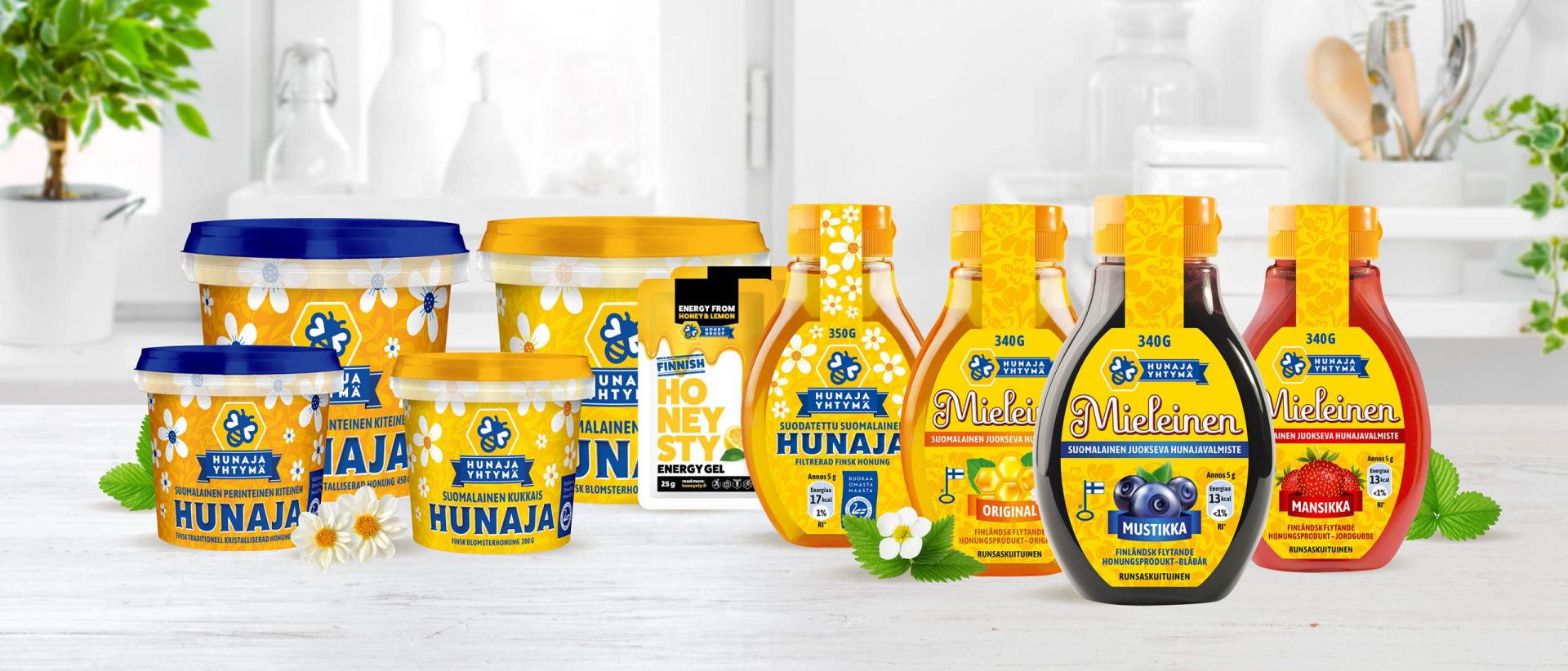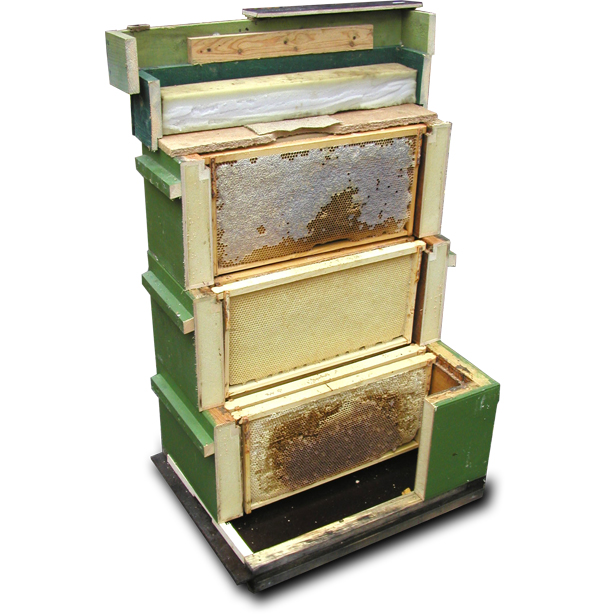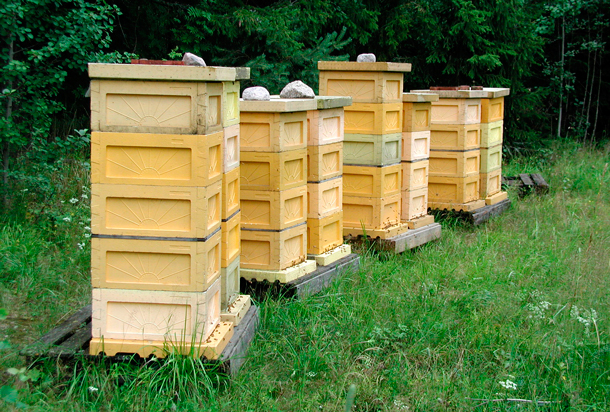The Beehive
THE BEEHIVE
Building a beehive begins with the cells. A cell is a hexagonal tube made from beeswax, which is bordered by other cells on each of its sides. These cells form a wall, and at the base of these cells there is another wall behind it with similar cells opening up in the other direction. This approximately 2,5 cm-thick construction that is formed of all of the cell walls that are attached to each other is called a comb. The queen lays eggs in most of the larvae combs, and pollen and honey are stored only in the upper cells. Honeycombs, on the other hand, mainly contain honey, and it is these honeycombs that the beekeeper collects from the hive once the season has ended.
Wild bees build their wax combs in a hole in a tree or in some other cavity. Honey-bee hives are built and tended to by human beings. In wild-bee areas, beekeeping is only done in order to get honey, since the bees would manage on their own as well, but in regions where bees have been imported, such as Finland, people’s help is needed.
In order to make it easier for the honey bees to work with the combs, they are given ready-made, wooden-framed wax frames where the bees can build the combs.
These frames are placed next to each other in the hive compartments, which are made of either styrofoam boxes or wooden boxes that are open at the top and at the bottom. These frames are hung from the top slats of the compartment, distanced from each other at a distance that leaves room for the bees to build the combs and to move around on top of them. Normally, there are 7-11 frames next to each other, depending on the size of the hive compartment. The number of compartments is increased during the summer and reduced in the autumn, depending on the number of bees and on the amount of honey. Therefore, the beehives are towers of varying heights.
The hive is placed on some type of a sturdy stand, for instance on bricks or on building boards, approximately 5-20 cm from the ground. At the bottom of the hive, there is the base that features the flight entrance and the flight board. The required number of compartments, complete with the frames, is stacked on top of the base, normally two in the winter and up to seven in the summer. A ceiling and a roof are placed on top of the compartments. In the autumn during feeding time, there is also a feeding box on top of the topmost compartment.
The hive boxes are sold without a finishing coat, but before they are used they should be painted in order to make them weather-proof, and in order for the bees to see them properly. The paint should be non-toxic and a type of paint that will not glue the compartments together. The most recommended colour is green, but other good colours include white, yellow and blue.
DID YOU KNOW: The thickness of the comb where the larvae cells are is just over two centimetres, whereas the food cells, which are slightly apart, are normally made slightly longer, and here the comb can be as much as three centimetres thick. The tops of the larvae cells are slightly rounded and matt-surfaced, whereas the tops of the honey cells are flat, shiny and often a wet-dark colour due to the honey that is touching them.
WHERE TO PLACE A BEEHIVE
If you do not have land of your own, it is relatively easy to get a permit for an apiary on land owned by others, too. The apiary should be located in a place where it can be easily tended to and close enough to nectar plants. There should be easy access to the hives with all of the equipment, and there should be space as well as stones or vegetation in between the hives for the bees to use as landmarks when they navigate to their own hive. Also, the apiary area should have enough space for air currents, which help the ventilation and the drying of the hive, but there should also be protection from cold winds. The ground should be dry. A good place for an apiary is, for instance, an expanse of slope facing the south or the edge of the woods. A bad location, on the other hand, is for example a hollow or an area that is closed off by buildings.
DID YOU KNOW: A bee can navigate to its hive from a maximum distance of five kilometres. In other words, this is the furthest possible distance between the hive and the sources of nectar. It would be ideal if there were enough flowers within a range of less than three kilometres from the hive. Whilst visiting the flowers, the bees not only collect nourishment but they also pollinate plants. As a result of this efficient pollination, the amount of berries and seeds increases and they grow bigger. Fruit and berries become juicier and bigger and they also ripen sooner and more evenly than they would without the help of bees. Choosing suitable locations for the hives provides both lots of honey as well as more berries and fruit than usual: bee pollination increases the berry and fruit harvest by as much as one quarter.



